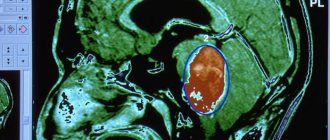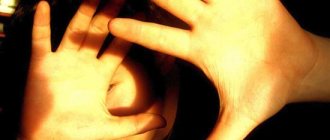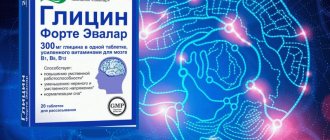In 80-90% of clinical cases, spina bifida is formed at the time of intrauterine development . With this disease, a disturbance occurs in the formation of the vertebrae in the area of the spinous processes, as a result of which nerve endings and the spinal cord fall out into the resulting space.
No doctor can name the exact causes of the pathology, but it has been confirmed that with a lack of vitamins in the mother’s body, the risk of developing pathology is higher. There are several forms of the pathological condition, which differ in severity and consequences. The lighter the form, the less prolapse of the hernial sac from the affected area. It has been proven that with a probability higher than 90% it is possible to detect pathology during fetal development.
Types of pathological formation
Spina bifida can form in any part of the spine. Some types of the disease are mild, characterized by minor disturbances and a minimum of side effects with mild symptoms. Others, on the contrary, lead to serious consequences, disability and disruption of the normal life of a child or adult. Localization of spina bifida depending on the area of formation:
- Cervical region . The rarest form of the disease manifests itself as a tumor in the upper back. It manifests itself as pathologies in the functioning of various muscles of the face and neck, including the throat: the vocal cords suffer. May affect the heart and respiratory system.
- Thoracic department . As with the cervical form, it causes defects in the facial muscles, larynx, heart and respiratory system. It may also affect the functioning of the gastrointestinal tract, including the liver and spleen.
- Lumbar region . The pathology is accompanied by impaired motor abilities, gastrointestinal tract, and genitourinary system.
In addition to classification by place of occurrence, spina bifida is classified into varying degrees of severity. The mildest form is meningocele, in which only the lining of the brain passes into the space between the vertebrae, but the brain itself retains its normal position.
The second most severe form is meningomyelocele, in which the spinal substance extends beyond the spine. The neural tube remains normal, but the child or adult already has neurological problems.
The third, one of the most severe forms of spina bifida, is meningoradiculocele, in which the newborn experiences an exit from the open space of not only the brain and its membrane, but also the nerve roots and the nerves themselves. However, the integrity of the tube is still maintained.
In the fourth degree, a spinal cord herniation – myelocystocele – is accompanied by a pronounced disruption of the structures of an element of the nervous system, and even with medical intervention, an unfavorable prognosis remains.
Any condition of a newborn patient, even if it is the first stage of a hernia, may be accompanied by a spinal tumor. The neoplasm can be either benign or malignant. It greatly complicates treatment and surgical intervention, but in the absence of surgery there is a high risk of degeneration of any tumor and its subsequent growth.
Etiology
Spina bifida in a child
This pathology has a fairly large list of causes, depending on the time of discovery and the nature of acquisition, in an adult or in a child, a congenital developmental disorder or a consequence of a complication of osteochondrosis, trauma.
Spina bifida in adults has the following causes:
- spinal injuries;
- the result of surgical intervention on the spine;
- hereditary predisposition;
- severe physical stress;
- excess body weight;
- sedentary lifestyle;
- diseases of the spine.
In the human spine, hard bone elements are replaced by cartilage, which makes it flexible and mobile. Intervertebral discs provide plasticity and shock absorption, and under the influence of adverse factors they are the most vulnerable.
Congenital spina bifida has the following causes:
- lack of nutrients during fetal formation;
- the effect of toxins on the body;
- taking drugs during pregnancy;
- severe infectious diseases of a pregnant woman.
The pathology develops due to a defect in the process of formation of the neural tube in the embryo, which forms the spinal canal and spinal cord. The severity of a pathology such as congenital spina bifida will depend on the period in which the embryo was exposed to unfavorable factors.
Acquired hernia in adults
Despite the fact that spina bifida occurs several times more often in newborns, in adults it is also accompanied by severe symptoms and complex treatment. And there are many reasons for this condition:
- lack of adequate treatment for osteochondrosis;
- serious spinal column injuries;
- significant excess weight;
- constant dragging of heavy objects;
- uncomfortable working postures;
- sudden movements and twisting of the spine;
- passion for strength sports.
Spina bifida can also occur in adults as a result of metabolic disorders or incorrect posture. In some cases, an inflammatory process is found in the cerebrospinal fluid.
Treating a hernia at home
If it is not possible to go to a sanatorium for treatment, you can try to cure the hernia at home. Be sure to undergo a full medical examination and obtain a doctor's prescription. If the doctor recommended therapeutic massage or procedures, find time for them.
Organize your day in such a way that you have enough time for treatments, massage, and therapeutic exercises. Limit movement as much as possible except for physical therapy and healthy gymnastics. Wear a supportive corset to stabilize the spine and avoid sudden movements, lifting or carrying heavy objects.
Any sudden movement or serious effort can lead to an exacerbation of the disease and put you in bed for a long time.
Clinical manifestation of the disease
It happens that spina bifida, which occurs in a mild form in a newborn, does not appear until a certain age. The first symptoms occur during intense physical exertion. Sometimes the disease is discovered during the diagnosis of back pain. The exception is when the spinal sac forms immediately after birth and is visually noticeable. If treatment is not followed, neurological symptoms will increase during the first years of life.
Among the general picture of clinical manifestations of spinal cord herniation are:
- the formation of a tumor with a soft consistency in the spine area, it is covered with thin skin of a bluish or red hue, similar to a mucous membrane;
- there is acute weakness in the limbs, reaching the point of paralysis, the patient has reduced motor activity, and the arms and legs are almost always in a tucked position;
- in severe cases, pronounced atrophy of muscle fibers is observed;
- the patient has impaired sensitivity to temperature, pain and other influences;
- Trophic changes gradually occur: ulcers, dry skin, swelling;
- a sharp decline in reflexes in newborns: knee, plantar and grasping;
- epileptic seizures are observed, in 30% of cases hydrocephalus develops in children, mental retardation is possible in adults;
- problems with pelvic functions – incontinence;
- pronounced defects of the legs and arms, incorrect position of the limbs.
Severe symptoms lead to the complete inability of an adult to provide for himself with spina bifida . Patients with severe forms of the disease often develop internal organ diseases, and due to fluid retention in the body, intracranial pressure increases, which can cause serious illnesses such as meningitis or encephalitis. During bed rest, inflammation in the lungs often occurs.
Treatment methods for intervertebral hernia ↑
Treatment of an intervertebral hernia depends on its location, size, presence of complications and stage of development.
Modern medicine offers two methods of treatment: surgical and alternative. It is impossible to say unequivocally about the effectiveness of one of them and the uselessness of the other.
Alternative treatments include:
Massage, physical therapy, spine stretching procedure; Taking anti-inflammatory and painkillers (at least for 3-4 weeks); Wearing a soft corset; Novocaine blockades; Electrophoresis with painkillers; UHF therapy, magnetic therapy; Phonophoresis with drugs that improve blood circulation.
Photo: therapeutic massage for vertebral hernia
Treatment without surgery
The human body has a great resource for self-healing.
Damage to the intervertebral discs can be cured without surgery, subject to strict adherence to rest and bed rest. The recovery process is long, it will take at least 2-3 months.
It is best for the patient to lie on his back with his legs raised on a pillow. From time to time, the position must be carefully changed, taking a comfortable position that does not cause pain.
To relieve pain, it is recommended to take anti-inflammatory and analgesic drugs.
They will not speed up recovery, but they will bring relief.
The pain usually subsides after a few weeks, but the process of recovery of the intervertebral disc will take at least another month, so bed rest must be observed even in its absence.
The spinal traction method provides a good effect for quickly relieving pain.
Spinal traction is a procedure used to treat some of its diseases (including intervertebral hernia). The essence of the method is as follows: muscle spasm and displacement of the spinal discs are eliminated by creating traction.
Spinal traction procedures can be dry or water. For patients with intervertebral hernia, water ones are recommended, as they are more gentle. Underwater traction can be horizontal or vertical. The vertical traction procedure is carried out in a pool a little more than two meters deep.
| Photo: “Dry” spinal traction | Photo: spinal traction in water |
The first session for a patient with cervical osteochondrosis lasts no more than 5 minutes, without weight. Then a load is used, the weight of which increases every time. Horizontal traction is carried out by horizontally sagging the patient’s body in a bathtub, the length of which is 2.5 meters.
Folk remedies
In a situation where conservative treatment of an intervertebral hernia has not brought results, and surgery is impossible for some reason, treatment of an intervertebral hernia with folk remedies can help.
A positive effect can be achieved if you use red clay. It is necessary to heat a lump of clay, moistened with water and wrapped in gauze, to 37°C. The clay is applied to the place where the hernia is located, covered and secured with a plaster. When the clay dries, it must be removed from the body.
Would you like to know how to get rid of a tumor using vertebroplasty? Read the article on how to treat spinal hemangioma and stay updated on innovative medical technologies.
Does your neck hurt and don’t know what to do? You probably have vertebrogenic cervicalgia, and you can read how to treat it here.
Are you interested in the causes of interlumbar hernia? This is written about here.
A mixture of mumiyo and honey is no less effective. A mixture of honey and mumiyo dissolved in water is applied to the spine, rubbed with fir oil. The ingredients should be taken in the proportion of 1 gram. mummy 100 gr. honey The mixture is vigorously rubbed into the spine area.
You can relieve pain from a herniated disc using a compress with horse fat. The fat should be applied to plastic wrap, covered with a cloth and placed on the spine. The pain will decrease after 1-2 hours. This compress can be worn for up to two days.
How to treat at home
You should never self-medicate or self-diagnose. At the first signs of pain and suspicion of an intervertebral hernia, you should consult a specialist. He will prescribe the necessary tests and determine the course of treatment. If you do not need hospitalization and will undergo treatment at home, you should follow all doctor’s instructions.
Fasting treatment
Fasting treatment for intervertebral hernia is carried out for 5-7 days. Relief occurs after three days of such treatment. Abstaining from food allows you to bring the body into a state that can withstand restorative procedures. This method is based on the theory that a starving body begins to use unnecessary resources. Therefore, a week without food will not only not harm the body, but will also help to significantly relieve back pain.
Diet for intervertebral hernia requires compliance with special rules:
Drink more - at least 7.5 liters of water per day; Take warm baths; Do not watch TV or read books, as there will definitely be episodes that will make you feel hungry. The best thing is to sleep more or play board games; Reduce physical activity.
If simple rules are followed, after a week of fasting the patient’s condition will allow him to move on to other methods of treatment.
Blockade
Novocaine blockade with the use of corticosteroid drugs effectively alleviates the patient's suffering. The effect of the blockade lasts from 1-3 weeks. If necessary, it is repeated after a week. During one course of treatment, no more than 3-4 novocaine blockades are performed. It should be remembered that blockades only relieve pain, but do not eliminate its causes.
Massage
Massage for intervertebral hernia cannot be performed at the very beginning of an exacerbation . This procedure can only be entrusted to a qualified specialist. The massage technique consists of small nuances, which ensure the high effectiveness of this method. The massage is performed gently, with great care.
The patient should not experience pain. If the procedure is performed incorrectly, further ruptures of the disc may occur, which will intensify muscle spasms and provoke even greater swelling of the nerve trunks. And all this is already an indication for surgery.
For intervertebral hernia, the following types of massage can be performed:
general massage; therapeutic massage of the spine; segmental massage of the back area; acupressure; cupping massage; Thai massage.
Cupping treatment
Cupping provides additional blood flow to injured discs and thereby improves their nutrition. With an integrated approach to treatment, it promotes a more active process of regeneration of destroyed intervertebral disc tissue.
Other symptoms
If spina bifida is located in the cervical region, then it is not characterized by the same symptoms as in other forms: the patient has pain and numbness in his arms, discomfort in the chest or shoulder girdle, sudden changes in pressure are possible, and headaches often occur. With a thoracic hernia, pain often affects the heart, intercostal neuralgia occurs, as well as other symptoms of the cardiovascular system.
If a patient develops a lumbar spinal hernia, it is accompanied by pain in the buttocks, thighs, and numbness of these parts, spreading to the legs. Sometimes an unusual symptom such as numbness in the groin area occurs.
Among the common symptoms that should be a reason to consult a doctor are: constant pain along the spine, regardless of the load, constant tension in the back muscles, the appearance of numbness in different parts of the limbs, as well as in the groin, and a reduction in range of motion.
If you identify a hernia at an early stage, you can minimize its consequences.
Preventive measures
To prevent the possibility of pathological changes in the fetus during pregnancy, a woman should take care of the opportunity to give the world a new life with good health. The expectant mother should adjust her diet, balancing it only with useful vitamins and substances that will contribute to the healthy development of the fetus. It is mandatory to take folic acid, starting from the very first day; it will also come in handy during planning.
Also, if a woman has already had problems with pregnancy complications, she must always follow all medical prescriptions and not use self-medication for infections and viral diseases. It is better to resort to preventive measures than to later treat spina bifida.
Diagnosis of pathology
Diagnosis of spina bifida can be made during pregnancy in the first months after conception (when the neural tube is formed). If serious violations are discovered that guarantee the birth of a child with a pathology that cannot be treated, then an abortion is recommended.
If the prognosis is favorable, you can give birth to a child, undergo an operation in the first days and undergo a course of rehabilitation. There is a practice that has not yet become widespread, but is already gaining momentum - the hernia is removed during intrauterine development.
Pathology can be detected using several methods:
- transillumination - transillumination of the formed sac to reveal the contents;
- CT and MRI - research methods provide maximum information about what the layers of the tumor consist of;
- myelography - determination of the degree of involvement of nervous tissues in the pathological process, carried out by introducing contrast agents into a peripheral vein.
The neurologist also studies the medical history, collects complaints from an adult patient, or studies information from parents.
If it is necessary to diagnose a disease in the fetus, it is carried out using ultrasound and blood tests for alpha-fetoprotein, which is detected when nerve tissue is destroyed. The method of amniocentesis (study of amniotic fluid) is also used.
Conservative therapy
Spina bifida is a serious pathology that in most cases requires surgical intervention. However, mild stages can be eliminated using conservative methods. If there are no serious symptoms, the patient is prescribed bed rest for at least 3 months. Any type of physical activity is prohibited .
Physiotherapy is prescribed:
- acupuncture – restores mobility, relieves spasms;
- gymnastics in the period after the main treatment;
- vacuum therapy to prevent relapses;
- massage – eliminates swelling and muscle tension.
The main treatment is based on taking certain medications that eliminate the causes of spina bifida. NSAIDs are used to relieve pain in the acute period ; nootropics and neurotrophics are also used to normalize nerve tissue. Be sure to take vitamins that normalize metabolic processes.
Why does a hernia appear in children?
Spina bifida occurs in newborns as a result of the pathological course of pregnancy:
- deficiency of folic acid and other vitamins is the main cause of pathology of the nervous system;
- factors arising from women: alcoholism, drug addiction, infestation with parasites and infections, intoxication due to injuries;
- early age - pregnancy occurs at 10-15 years of age;
- hereditary factors that have no explanation.
The prerequisites for disorders are formed in the first 8 weeks of pregnancy.
What is spina bifida
This hernia is the result of a ruptured disc located between two vertebrae. Because of this, it protrudes, and the protrusion itself begins to infringe on neighboring tissues and nerve endings. All this leads to severe pain, a person cannot perform everyday tasks and often finds himself bedridden due to the fact that it is very painful to straighten up and move. When nerves are pinched, the sensitivity of the limbs or certain areas of the skin is often reduced or completely lost. The most vulnerable point of the spine is the lumbar region, since it carries the most loads.
Surgery
There are 2 techniques in which spina bifida in newborns or unborn children is surgically removed.
Perinatal surgery
Conducted at 19-26 weeks of pregnancy. Using materials and instruments, the doctor closes the abnormal hole in the spine, causing the brain to snap back into place. After the operation, the patient is prescribed a cesarean section, since the natural labor process leads to relapses in 80% of cases .
There are practically no consequences after perinatal intervention; you just need to be constantly monitored by a doctor. In most cases, almost complete restoration of the spine occurs. However, these operations are performed only in Israeli and Western clinics.
Postpartum surgery
The effectiveness of removing spina bifida in a newborn is high only in the first days after the birth of the child. If you delay, then after the intervention the child will forever remain mentally disabled with severe physical incapacity.
When performing surgery after the birth of a child, there is a high risk of relapse. If congenital hydrocephalus is added to the pathology, then the life of a small patient is reduced by tens of years.
Spina bifida is a disease with several degrees of severity, on which everything depends. The success of surgery, rehabilitation, the presence of complications - all this is directly related to the type of pathology. If the existing anomaly is not removed for a newborn in the first days of life, then the prognosis for normal social activity is extremely unfavorable.










